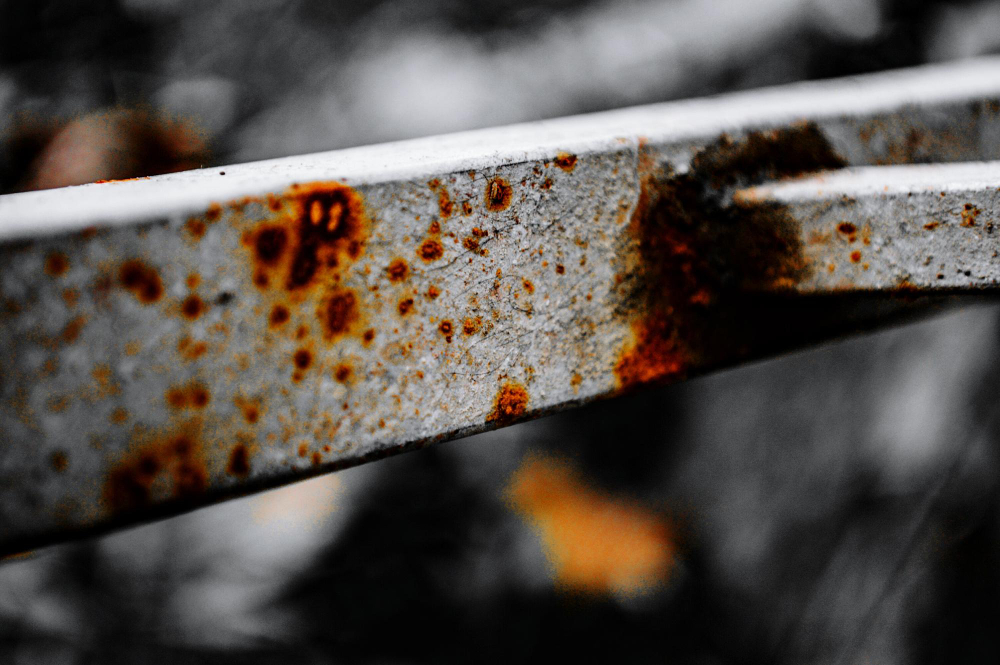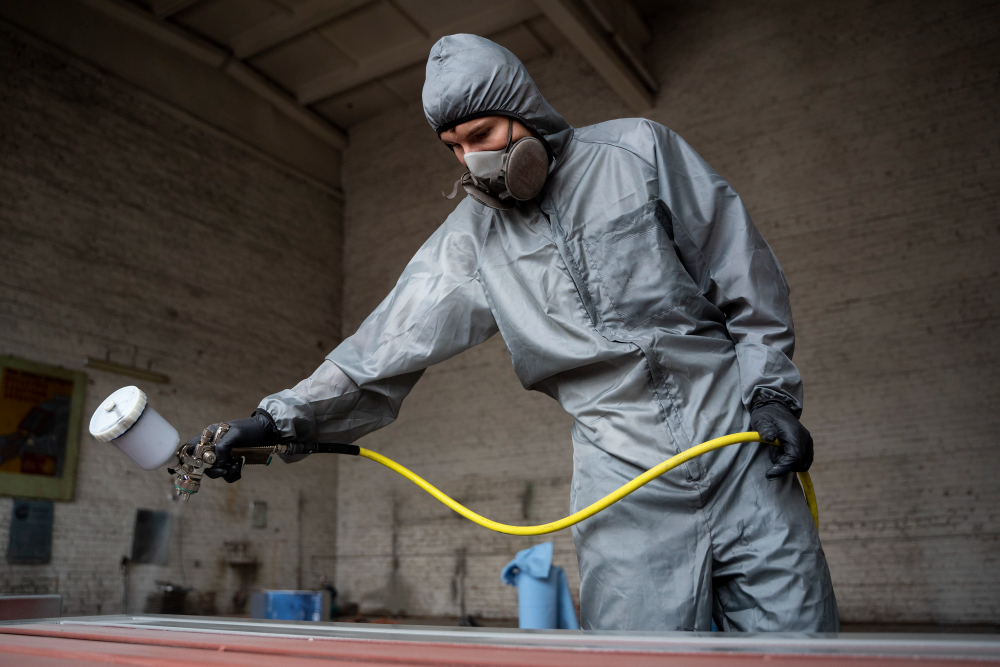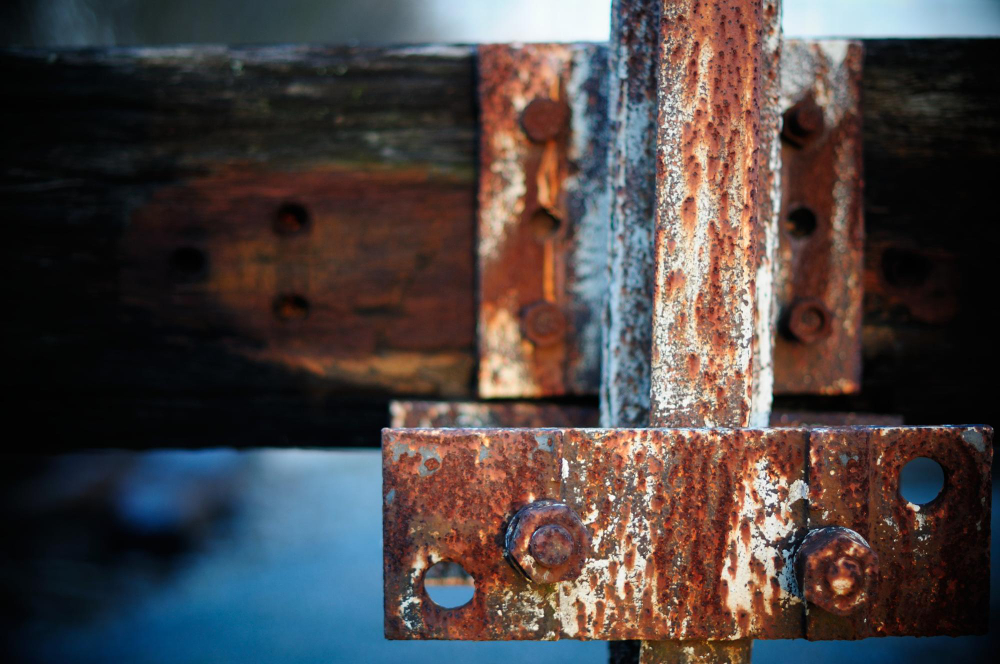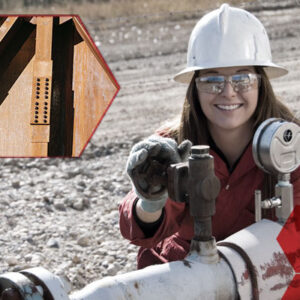Understanding Galvanic Corrosion: Prevention Strategies and Impact
Definition of Galvanic Corrosion
Galvanic corrosion, also known as bimetallic corrosion, is an electrochemical process where one metal corrodes preferentially when it is in electrical contact with a different type of metal, in the presence of an electrolyte. This phenomenon occurs due to the differences in the electrochemical potentials of the metals involved.
Importance of Understanding Galvanic Corrosion in Various Industries
Understanding galvanic corrosion is crucial across multiple industries, including marine, aerospace, construction, and automotive sectors. In these fields, different metals are often used in conjunction to achieve specific mechanical and structural properties. If not properly managed, galvanic corrosion can lead to significant material degradation, safety hazards, and increased maintenance costs. By comprehending the mechanisms and preventive measures of galvanic corrosion, industries can enhance the longevity and reliability of their metallic structures and components.
Brief Overview of the Article Structure
This article will provide a comprehensive examination of galvanic corrosion. It will begin with an explanation of the fundamental principles and mechanisms behind the process. Next, it will delve into the factors influencing galvanic corrosion, such as the types of metals involved, the nature of the electrolyte, and environmental conditions. The article will then explore practical examples of galvanic corrosion in various industries, highlighting both the challenges it presents and the strategies employed to mitigate its effects. Finally, it will offer best practices and preventive measures to manage galvanic corrosion effectively, ensuring the integrity and durability of metallic systems.
Basic Principles of Galvanic Corrosion
Explanation of the Electrochemical Process
Galvanic corrosion is an electrochemical process that occurs when two dissimilar metals come into electrical contact in the presence of an electrolyte. This interaction sets up a galvanic cell, where the electrochemical potentials of the metals differ, causing one metal (the anode) to corrode and release electrons, while the other metal (the cathode) remains protected and relatively unaffected.
Role of Anode and Cathode in Galvanic Corrosion
In a galvanic cell, the metal with the higher electrochemical potential acts as the anode, and the metal with the lower potential acts as the cathode. The anode undergoes oxidation, losing electrons and deteriorating over time. The released electrons flow through the electrical connection to the cathode, where they participate in reduction reactions. The cathode is thus protected from corrosion, while the anode experiences accelerated corrosion. The roles of anode and cathode are determined by the metals’ positions in the galvanic series, which ranks metals based on their electrochemical potential in a specific electrolyte.
Conditions Necessary for Galvanic Corrosion to Occur
For galvanic corrosion to take place, three essential conditions must be met:
Electrical Contact: The two dissimilar metals must be electrically connected, either directly or through a conductive path.
Presence of an Electrolyte: An electrolyte, such as water (especially saltwater), must be present to facilitate the movement of ions between the metals.
Potential Difference: There must be a difference in electrochemical potential between the two metals, creating a driving force for the electrochemical reactions.
Factors Influencing Galvanic Corrosion
Types of Metals Involved
The metals involved in a galvanic cell play a crucial role in the rate and severity of galvanic corrosion. These factors include:
Electrochemical Potential: The difference in electrochemical potentials between the two metals determines which metal will act as the anode and which will act as the cathode. Metals that are far apart in the galvanic series, such as zinc and copper, have a higher potential difference and are more likely to experience significant galvanic corrosion.
Anodic Index: This index ranks metals based on their tendency to corrode when coupled with other metals. A greater difference in anodic indices between the metals indicates a higher risk of galvanic corrosion.
Electrolyte Presence and Characteristics
The presence and nature of the electrolyte are critical for galvanic corrosion to occur. Key characteristics include:
Conductivity: Electrolytes with higher conductivity, such as saltwater, facilitate faster ion movement between the anode and cathode, accelerating the corrosion process.
pH Levels: The acidity or alkalinity of the electrolyte can influence the rate of corrosion. Highly acidic or basic environments often increase corrosion rates.
Concentration: The concentration of dissolved salts or other ions in the electrolyte affects the severity of galvanic corrosion. Higher concentrations generally lead to more aggressive corrosion.
Environmental Conditions
Environmental factors significantly impact the galvanic corrosion process. These include:
Temperature: Higher temperatures generally increase the rate of electrochemical reactions, leading to faster corrosion. Conversely, lower temperatures can slow down the process.
Humidity: High humidity levels provide more moisture, which can act as an electrolyte, promoting galvanic corrosion. In contrast, dry environments reduce the availability of an electrolyte, thereby reducing corrosion rates.
Oxygen Availability: The presence of oxygen can influence the cathodic reaction. Increased oxygen availability typically accelerates the cathodic reduction process, enhancing the overall corrosion rate.
Physical Contact Between Metals
The nature and extent of physical contact between the dissimilar metals affect the efficiency of the galvanic cell. Key considerations include:
Contact Area: A larger contact area between the anode and cathode can increase the rate of galvanic corrosion. The corrosion rate is influenced by the ratio of the cathodic area to the anodic area; a larger cathodic area relative to the anodic area can result in more severe corrosion of the anode.
Electrical Conductivity: The quality of the electrical connection between the metals is essential. Poor electrical conductivity can limit electron flow and reduce the overall corrosion rate. However, a good conductive path facilitates more efficient electron transfer, promoting corrosion.
Methods to Prevent and Control Galvanic Corrosion
Material Selection and Compatibility
Choosing compatible materials is a fundamental strategy for preventing galvanic corrosion. Key practices include:
Similar Electrochemical Potentials: Select metals that are close in the galvanic series to minimize potential differences. This reduces the driving force for galvanic corrosion.
Use of Compatible Alloys: In applications where dissimilar metals must be used, choose alloys specifically designed to be less susceptible to galvanic corrosion.
Avoid Direct Contact: Where possible, avoid direct contact between dissimilar metals by using insulating materials or design modifications.
Use of Protective Coatings and Barriers
Applying protective coatings and barriers can significantly reduce the risk of galvanic corrosion. Common approaches include:
Non-Conductive Coatings: Apply paint, powder coatings, or other non-conductive materials to one or both metals to prevent direct electrical contact and exposure to the electrolyte.
Metallic Coatings: Use galvanization (zinc coating), anodizing, or other metallic coatings to protect the more active metal. This can also involve coating both metals with a more noble metal to act as a sacrificial barrier.
Sealants and Insulating Gaskets: Utilize sealants, gaskets, or insulating sleeves to physically separate the metals and prevent electrolyte ingress.
Cathodic Protection Techniques
Cathodic protection methods involve altering the electrochemical environment to protect the susceptible metal. Common techniques include:
Sacrificial Anodes: Attach a more anodic metal (e.g., zinc or magnesium) to the metal to be protected. The sacrificial anode corrodes preferentially, protecting the more valuable metal.
Impressed Current Systems: Use an external power source to supply a current that counteracts the galvanic cell’s electrochemical reaction, effectively preventing the anodic metal from corroding.
Design Considerations to Minimize Risk
Proper design can greatly reduce the likelihood of galvanic corrosion. Key considerations include:
Minimize Galvanic Couples: Design components to avoid or minimize the contact between dissimilar metals. If unavoidable, ensure that the more noble metal has a smaller surface area relative to the more active metal.
Drainage and Ventilation: Ensure that joints and connections are designed to avoid trapping moisture, which can act as an electrolyte. Adequate drainage and ventilation can help keep surfaces dry and reduce corrosion risk.
Isolate Metals: Use insulating materials or design features to separate dissimilar metals physically. This can include the use of plastic washers, sleeves, or other non-conductive barriers.
Regular Maintenance: Implement regular inspection and maintenance routines to identify early signs of corrosion and take corrective actions before significant damage occurs.
Visual Inspection Methods
Visual inspection is the simplest and most direct method to detect galvanic corrosion. Key aspects include:
Regular Inspections: Conduct regular and systematic visual inspections to identify signs of corrosion, such as pitting, discoloration, or flaking on metal surfaces.
Inspection Aids: Use magnifying glasses, borescopes, or other visual aids to inspect hard-to-reach areas and detailed surfaces.
Documenting Findings: Keep detailed records of inspection findings, noting the location, extent, and type of corrosion observed. This helps in tracking the progression and planning maintenance activities.
Non-Destructive Testing Techniques
Non-destructive testing (NDT) techniques allow for the detection and evaluation of corrosion without damaging the components. Common NDT methods include:
Ultrasonic Testing (UT): Uses high-frequency sound waves to detect changes in material thickness and identify internal corrosion or erosion. It is effective for inspecting pipes, tanks, and structural components.
Radiographic Testing (RT): Employs X-rays or gamma rays to produce images of the internal structure of a component, revealing corrosion, cracks, or voids.
Eddy Current Testing (ECT): Utilizes electromagnetic induction to detect surface and near-surface defects, such as cracks or corrosion, particularly in conductive materials.
Magnetic Particle Testing (MPT): Applies a magnetic field to ferromagnetic materials, revealing surface and near-surface defects through the accumulation of magnetic particles at discontinuities.
Dye Penetrant Testing (DPT): Involves applying a dye to the surface of a non-porous material, then using a developer to draw out the dye from cracks or defects, making them visible.
Monitoring Systems and Sensors
Advanced monitoring systems and sensors provide continuous and real-time data on the condition of metallic structures, enabling proactive corrosion management. These systems include:
Electrochemical Sensors: Measure parameters such as corrosion potential, corrosion rate, and pH levels. These sensors can be embedded in structures to monitor galvanic corrosion continuously.
Corrosion Coupons: Small, sacrificial metal samples exposed to the same environment as the monitored structure. By periodically removing and analyzing these coupons, the extent of corrosion can be assessed.
Impedance Spectroscopy: Measures the impedance of a material over a range of frequencies to detect corrosion-related changes in the material’s properties.
Wireless Monitoring Systems: Utilize wireless sensors to transmit corrosion data to a central monitoring system, allowing for remote and real-time tracking of corrosion processes.
Data Analytics and Predictive Modeling: Advanced software tools analyze sensor data to predict future corrosion behavior and provide actionable insights for maintenance and mitigation strategies.
Consequences of Neglecting Galvanic Corrosion
Structural Failures and Safety Hazards
Neglecting galvanic corrosion can lead to significant structural failures and safety hazards, including:
Component Weakening: Corroded metals lose their structural integrity, becoming weaker and more prone to failure under stress. This can lead to the collapse of critical structures such as bridges, buildings, and pipelines.
Accidents and Injuries: Compromised structural elements can cause accidents, potentially resulting in severe injuries or fatalities. For example, corroded aircraft components may lead to catastrophic failures during flight.
Environmental Risks: Structural failures in storage tanks or pipelines carrying hazardous materials can result in spills, environmental contamination, and ecological damage.
Economic Impacts and Maintenance Costs
Ignoring galvanic corrosion can have substantial economic repercussions, such as:
Increased Repair Costs: Corroded components often require expensive repairs or replacements. Regular maintenance and early intervention are generally more cost-effective than dealing with extensive damage.
Operational Downtime: Unplanned shutdowns for emergency repairs disrupt operations, leading to production losses and financial penalties. In industries like manufacturing and oil and gas, downtime can be extremely costly.
Insurance and Liability Costs: Structural failures and accidents due to corrosion can lead to higher insurance premiums and potential legal liabilities. Companies may face lawsuits and compensation claims from affected parties.
Long-Term Effects on Asset Lifespan and Reliability
The long-term neglect of galvanic corrosion affects asset lifespan and reliability in several ways:
Reduced Asset Lifespan: Persistent corrosion shortens the lifespan of metallic assets, necessitating more frequent replacements and reducing the overall return on investment.
Decreased Reliability: Corroded components are less reliable, increasing the risk of unexpected failures. This can compromise the performance and safety of critical systems, such as power plants, transportation networks, and industrial machinery.
Reputation Damage: Companies known for poor maintenance and frequent structural failures may suffer reputational damage, leading to loss of customer trust and business opportunities.
Frequently Asked Questions
What is galvanic corrosion?
Galvanic corrosion occurs when two different metals are in contact in the presence of an electrolyte, causing one metal to corrode more rapidly than it would alone.
How does galvanic corrosion happen?
It happens due to an electrochemical process where one metal acts as an anode (sacrificial metal) and the other as a cathode, leading to accelerated corrosion of the anodic metal.
What factors influence galvanic corrosion?
Factors include the types of metals involved, electrolyte characteristics (e.g., acidity), temperature, humidity, and the surface area of contact between the metals.
What are the consequences of galvanic corrosion?
It can lead to structural integrity issues, premature failure of components, increased maintenance costs, and safety hazards in industrial and marine environments.
Closing Insight
At Corcon, we understand the paramount importance of addressing galvanic corrosion across various industries. Galvanic corrosion, if neglected, can lead to catastrophic structural failures, significant safety hazards, and substantial economic losses. Through our comprehensive approach, which includes advanced detection and monitoring techniques, informed material selection, protective coatings, and strategic design considerations, we aim to mitigate the risks associated with galvanic corrosion.
Our mission is to educate and equip industry professionals with the knowledge and tools necessary to prevent and control galvanic corrosion effectively. By fostering a proactive culture of corrosion management, we help industries extend the lifespan of their assets, enhance operational reliability, and reduce maintenance
Image Reference: Freepik
Disclaimer: All trademarks, logos, and brand names are the property of their respective owners. All company, product, and service names used in this website are for identification purposes only. Use of these names, trademarks, and brands does not imply endorsement.








